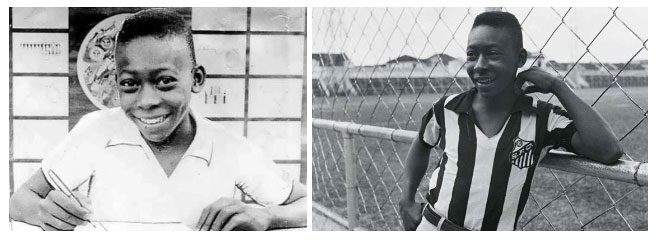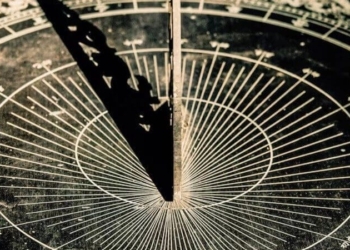Pele is not called the “King of Football” for no reason. So, what makes this Brazilian legend worthy of such a noble title?
The Early Years of King Pele
Pele’s real name is Edson Arantes do Nascimento. He was born on October 23, 1940, in Três Corações, Minas Gerais, in southern Brazil. Pele’s father was former Fluminense player Dondinho, and his mother was Celeste Arantes. In his family, Pele is the eldest child, with one younger sister.
According to Brazilian media, Pele was named after the great inventor Thomas Edison. However, it is unclear whether his parents decided to drop the letter “i” or if it was a mistake during the birth registration, leading to the legendary footballer’s name being Edson Arantes do Nascimento.
Initially, his family called him by the nickname “Dico.” However, when he went to school or played football on the streets, his friends often called him the familiar name “Pele” because of its phonetic similarity to the name of the famous local goalkeeper Vasco da Gama Bile, whom Pele admired greatly.
From a young age, Pele showed a natural talent for football. By the age of 10, he even formed his own team to compete against other street teams. Pele participated in local amateur tournaments and achieved numerous victories. In 1956, he decided to sign a professional contract with Santos FC.

Pele signs a professional contract with Santos at age 16. (Photo: Globo)
Wearing the colors of the São Paulo team, Pele quickly shone. At 16, he scored his first career goal, and in that same season, the young boy made a strong impression by becoming the top scorer.
In July 1957, at just 16 years and 9 months old, Pele scored a goal that helped Brazil defeat rival Argentina 2-1 at the Maracanã Stadium. This goal still holds the record for the youngest player to score in the history of the Selecao.
Thanks to an impressive performance streak, Pele caught the eye of coach Vicente Feola. At 17, the young Santos talent caused a sensation in the samba country when he was called up to the Brazilian national team for the 1958 World Cup.
Why Pele is the Only Player Called “King of Football”
The biggest football festival on earth, held in Sweden, became Pele’s showcase. Although he only entered the field in the last group stage match due to a knee injury before the World Cup, the 17-year-old prodigy shone brightly with 6 goals: one in the quarter-finals, a hat-trick in the semi-finals, and a double in the final, leading Brazil to its first world championship.
The achievements at the 1958 World Cup turned Pele into a living legend in the eyes of samba fans. His talent was recognized worldwide. Many major clubs in Europe, such as Real Madrid, Bayern Munich, Juventus, and Napoli, were ready to roll out the red carpet for Pele.
However, Pele was unable to transfer to Europe due to an incredible story. In 1961, Brazilian President Janio Quadros decided to use his power to push the Parliament to pass a law considering Pele as a… “national treasure” for 10 years. Therefore, throughout his career, Pele was almost exclusively associated with Santos before moving to the United States to play for the New York Cosmos in his later years.
Unable to play at the highest level in Europe, Pele still made the world go crazy during every World Cup. He helped Brazil win the championship two more times in 1962 and 1970, making the Selecao the first team to achieve a hat-trick of championships, securing the Jules Rimet Trophy permanently. Pele holds the unprecedented record of being the only player to win the World Cup three times.
In Pele’s era, football was still a “free” game. Players often had to protect themselves from injuries. The football rules at that time were not perfect, and there were no clear and strict penalties, allowing defenders to play very physically. As a result, the risk of severe injury was quite high. Nevertheless, throughout his career, Pele rarely had to leave the field and continued to shine brightly.

Pele is the only player in history to score a hat-trick of World Cup championships. (Photo: Getty).
In 1999, Pele was voted Player of the Century by the International Federation of Football History & Statistics (IFFHS). That same year, the prestigious magazine France Football asked the winners of the Ballon d’Or to choose the Player of the Century, and they chose Pele. Also in 1999, the International Olympic Committee (IOC) named Pele the Athlete of the Century, while Time magazine included the King of Football in its list of the 100 most influential people of the 20th century.
In 2013, Pele received the FIFA Ballon d’Or award to recognize his contributions as a global football icon. Throughout his career, Pele scored 1,281 goals in 1,363 matches, including unofficial friendlies. This achievement secured the Brazilian legend a place in the Guinness World Records for the most goals scored.
At the club level, Pele is currently the highest goal scorer for Santos and led the São Paulo team to win the Copa Libertadores two consecutive years, in 1962 and 1963. He is affectionately given many noble nicknames by fans, such as : “King of Football” (O Rei do Futebol), “Black Pearl” (Pérola Negra), “King Pele” (O Rei Pelé), or simply “The King” (O Rei).





















































